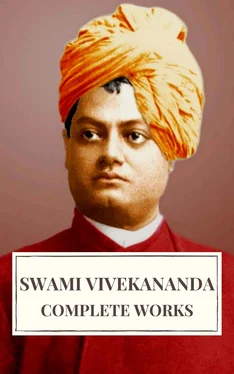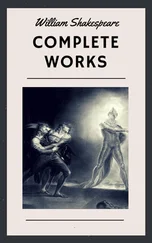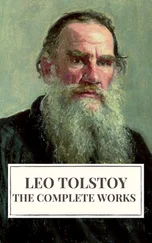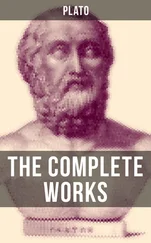What makes nature (Prakriti) change? We see so far that everything, all Prakriti, is Jada, insentient. It is all compound and insentient. Wherever there is law, it is proof that the region of its play is insentient. Mind, intelligence, will, and everything else is insentient. But they are all reflecting the sentiency, the “Chit” of some being who is beyond all this, whom the Sankhya philosophers call “Purusha”. The Purusha is the unwitting cause of all the changes in the universe. That is to say, this Purusha, taking Him in the universal sense, is the God of the universe. It is said that the will of the Lord created the universe. It is very good as a common expression, but we see it cannot be true. How could it be will? Will is the third or fourth manifestation in nature. Many things exist before it, and what created them ? Will is a compound, and everything that is a compound is a product of nature. Will, therefore, could not create nature. So, to say that the will of the Lord created the universe is meaningless. Our will only covers a little portion of self-consciousness and moves our brain. It is not will that is working your body or that is working the universe. This body is being moved by a power of which will is only a manifestation in one part. Likewise in the universe there is will, but that is only one part of the universe. The whole of the universe is not guided by will; that is why we cannot explain it by the will theory. Suppose I take it for granted that it is will moving the body, then, when I find I cannot work it at will, I begin to fret and fume. It is my fault, because I had no right to take the will theory for granted. In the same way, if I take the universe and think it is will that moves it and find things which do not coincide, it is my fault. So the Purusha is not will; neither can it be intelligence, because intelligence itself is a compound. There cannot be any intelligence without some sort of matter corresponding to the brain. Wherever there is intelligence, there must be something akin to that matter which we call brain which becomes lumped together into a particular form and serves the purpose of the brain. Wherever there is intelligence, there must be that matter in some form or other. But intelligence itself is a compound. What then is this Purusha? It is neither intelligence nor will, but it is the cause of all these. It is its presence that sets them all going and combining. It does not mix with nature; it is not intelligence, or Mahat; but the Self, the pure, is Purusha. “I am the witness, and through my witnessing, nature is producing; all that is sentient and all that is insentient.”
What is this sentiency in nature? We find intelligence is this sentiency which is called Chit. The basis of sentiency is in the Purusha, it is the nature of Purusha. It is that which cannot be explained but which is the cause of all that we call knowledge. Purusha is not consciousness, because consciousness is a compound; buts whatever is light and good in consciousness belongs to Purusha. Purusha is not conscious, but whatever is light in intelligence belongs to Purusha. Sentiency is in the Purusha, but the Purusha is not intelligent, not knowing. The Chit in the Purusha plus Prakriti is what we see around us. Whatever is pleasure and happiness and light in the universe belongs to Purusha; but it is a compound, because it is Purusha plus Prakriti. “Wherever there is any happiness, wherever there is any bliss, there is a spark of that immortality which is God.” “Purusha is the; great attraction of the universe; though untouched by and unconnected with the universe, yet it attracts the whole; universe.” You see a man going after gold, because behind it is a spark of the Purusha though mixed up with a good deal of dirt. When a man loves his children or a woman her husband, what is the attracting power? A spark of Purusha behind them. It is there, only mixed up with “dirt”. Nothing else can attract. “In this world of insentiency the Purusha alone is sentient.” This is the Purusha of the Sankhya. As such, it necessarily follows that the Purusha must be omnipresent. That which is not omnipresent must be limited. All limitations are caused; that which is caused must have a beginning and end. If the Purusha is limited, it will die, will not be free, will not be final, but must have some cause. Therefore it is omnipresent. According to Kapila, there are many Purushas; not one, but an infinite number of them. You and I have each of us one, and so has everyone else; an infinite number of circles, each one infinite, running through this universe. The Purusha is neither mind nor matter, the reflex from it is all that we know. We are sure if it is omnipresent it has neither death nor birth. Nature is casting her shadow upon it, the shadow of birth and death, but it is by its nature pure. So far we have found the philosophy of the Sankhya wonderful.
Next we shall take up the proofs against it. So far the analysis is perfect, the psychology incontrovertible. We find by the division of the senses into organs and instruments that they are not simple, but compound; by dividing egoism into sense and matter, we find that this is also material and that Mahat is also a state of matter, and finally we find the Purusha. So far there is no objection. But if we ask the Sankhya the question, “Who created nature?” — the Sankhya says that the Purusha and the Prakriti are uncreate and omnipresent, and that of this Purusha there is an infinite number. We shall have to controvert these propositions, and find a better solution, and by so doing we shall come to Advaitism. Our first objection is, how can there be these two infinites? Then our argument will be that the Sankhya is not a perfect generalization, and that we have not found in it a perfect solution. And then we shall see how the Vedantists grope out of all these difficulties and reach a perfect solution, and yet all the glory really belongs to the Sankhya. It is very easy to give a finishing touch to a building when it is constructed.
I shall give you a résumé of the Sânkhya philosophy, through which we have been going. We, in this lecture, want to find where its defects are, and where Vedanta comes in and supplements it. You must remember that according to Sankhya philosophy, nature is the cause of all these manifestations which we call thought, intellect, reason, love, hatred, touch, taste, and matter. Everything is from nature. This nature consists of three sorts of elements, called Sattva, Rajas, and Tamas. These are not qualities, but elements, the materials out of which the whole universe is evolved. In the beginning of a cycle these remain in equilibrium; and when creation comes, they begin to combine and recombine and manifest as the universe. The first manifestation is what the Sankhya calls the Mahat or Intelligence, and out of that comes consciousness. According to Sankhya, this is an element (Tattva). And out of consciousness are evolved Manas or mind, the organs of the senses, and the Tanmâtras (particles of sound, touch, etc.). All the fine particles are evolved from consciousness, and out of these fine particles come the gross elements which we call matter. The Tanmatras cannot be perceived; but when they become gross particles, we can feel and sense them.
The Chitta, in its threefold function of intelligence, consciousness, and mind, works and manufactures the forces called Prâna. You must at once get rid of the idea that Prana is breath. Breath is one effect of Prana. By Prana are meant the nervous forces governing and moving the whole body, which also manifest themselves as thought. The foremost and most obvious manifestation of Prana is the breathing motion. Prana acts upon air, and not air upon it. Controlling the breathing motion is prânâyâma. Pranayama is practised to get mastery over this motion; the end is not merely to control the breath or to make the lungs strong. That is Delsarte, not Pranayama. These Pranas are the vital forces which manipulate the whole body, while they in their turn are manipulated by other organs in the body, which are called mind or internal organs. So far so good. The psychology is very clear and most precise; and yet it is the oldest rational thought in the world! Wherever there is any philosophy or rational thought, it owes something or other to Kapila. Pythagoras learnt it in India, and taught it in Greece. Later on Plato got an inkling of it; and still later the Gnostics carried the thought to Alexandria, and from there it came to Europe. So wherever there is any attempt at psychology or philosophy, the great father of it is this man, Kapila. So far we see that his psychology is wonderful; but we shall have to differ with him on some points, as we go on. We find that the basic principle on which Kapila works, is evolution. He makes one thing evolve out of another, because his very definition of causation is “the cause reproduced in another form,” and because the whole universe, so far as we see it, is progressive and evolving. We see clay; in another form, we call it a pitcher. Clay was the cause and the pitcher the effect. Beyond this we cannot have any idea of causation. Thus this whole universe is evolved out of a material, out of Prakriti or nature. Therefore, the universe cannot be essentially different from its cause. According to Kapila, from undifferentiated nature to thought or intellect, not one of them is what he calls the “Enjoyer” or “Enlightener”. Just as is a lump of clay, so is a lump of mind. By itself the mind has no light; but ate see it reasons. Therefore there must be some one behind it, whose light is percolating through Mahat and consciousness, and subsequent modifications, and this is what Kapila calls the Purusha, the Self of the Vedantin. According to Kapila, the Purusha is a simple entity, not a compound; he is immaterial, the only one who is immaterial, and all these various manifestations are material. I see a black-board. First, the external instruments will bring that sensation to the nerve-centre, to the Indriya according to Kapila; from the centre it will go to the mind and make an impression; the mind will present it to the Buddhi, but Buddhi cannot act; the action comes, as it were, from the Purusha behind. These, so to speak, are all his servants, bringing the sensations to him, and he, as it were, gives the orders, reacts, is the enjoyer, the perceiver, the real One, the King on his throne, the Self of man, who is immaterial. Because he is immaterial, it necessarily follows that he must be infinite, he cannot have any limitation whatever. Each one of the Purushas is omnipresent; each one of us is omnipresent, but we can act only through the Linga Sharira, the fine body. The mind, the self-consciousness, the organs, and the vital forces compose the fine body or sheath, what in Christian philosophy is called the spiritual body of man. It is this body that gets salvation, or punishment, or heaven, that incarnates and reincarnates, because we see from the very beginning that the going and the coming of the Purusha or soul are impossible. Motion means going or coming, and what goes or comes from one place to another cannot be omnipresent. Thus far we see from Kapila’s psychology that the soul is infinite, and that the soul is the only thing which is not composed of nature. He is the only one that is outside of nature, but he has got bound by nature, apparently. Nature is around him, and he has identified himself with it. He thinks, “I am the Linga Sharira”, “I am the gross matter, the gross body”, and as such he enjoys pleasure and pain, but they do not really belong to him, they belong to this Linga Sharira or the fine body.
Читать дальше












